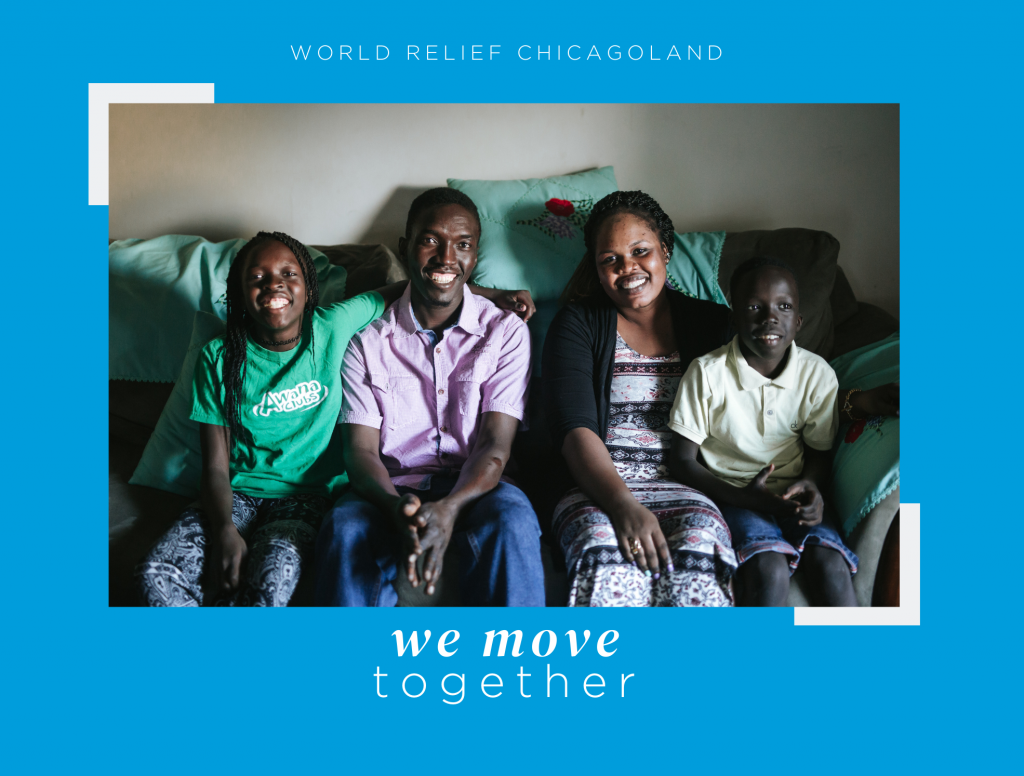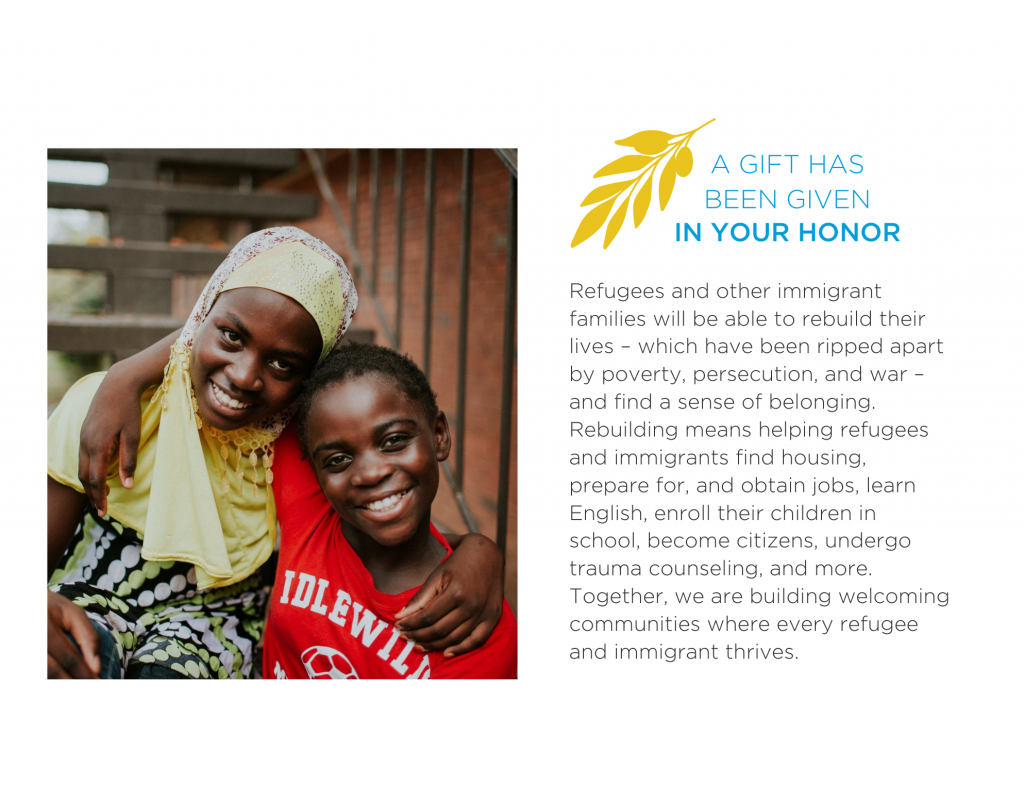Posts by Carrie Woodward
5 Times in U.S. History When Christians Advocated for Refugees and Immigrants
This year, the number of displaced people reached 100 million. That includes refugees, asylum seekers, and 53.2 million people displaced within their home country by conflict. And it’s a higher number than ever recorded in history.
In light of this, World Relief and other organizations have called for action – by the U.S. Government, community members, and the Church. Christian leaders are at the forefront of this advocacy, motivated by verses like Matthew 25:31-40.
“I was hungry and you gave me food, I was thirsty and you gave me drink, I was a stranger and you welcomed me.”
Matthew 25:31-40, in which Jesus tells His followers that caring for others is a way to serve Him directly.
A History of Welcoming the Stranger
The crisis may be greater than ever before, but throughout history, Christians have spoken up about immigrant and refugee needs.
In recent U.S. history, Christians have referenced Deuteronomy 24:14 as a moral reason to look out for the good of immigrants: “Do not take advantage of a hired worker who is poor and needy, whether that worker is a fellow Israelite or a foreigner residing in one of your towns.”
This Scripture has inspired countless people of faith to seek justice and care for immigrants navigating a foreign culture in the United States.
At times of prevalent anti-immigrant narratives, Christians have returned to the Bible’s command to care for immigrants and refugees. At times when the Church forgot its mandate, bold leaders reminded the Church of this biblical calling.
Here are 5 Times in History When Christians Led in Advocating for Immigrants and Refugees.
Advocating for Chinese Immigrants
In the 1840s and ‘50s, work in the California gold mines and garment factories, agricultural fields, and railroads drew thousands of Chinese immigrants to the U.S. West Coast. Eventually, more than 25,000 Chinese immigrants became the state’s largest non-white minority group. They formed vibrant communities in California. But despite being only .0002% of workers in the U.S., anti-Chinese sentiment began to grow, as white workers blamed them for taking jobs and depressing wages. Chinese immigrants faced growing discrimination, exclusion from community, and new anti-Chinese legislation. Eventually, the Chinese Exclusion Act of 1882 restricted Chinese people from migrating to the United States.
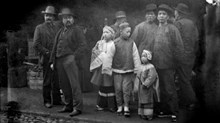
During this time, a Presbyterian pastor and missionary named William Speer became a vocal advocate for the fair treatment of Chinese immigrants. He used his relationships, knowledge of their language, and workforce data to argue against anti-Chinese legislation and even planted a Chinese Christian church in San Francisco in 1853. During his lifetime, he was vocal in opposition to racial prejudice and left a legacy of successors who contributed to fighting the racist anti-Chinese sentiment and joined with Chinese Christians to lead and channel Presbyterian support for the community.
Supporting Immigrants in the Community
At the turn of the 20th century, immigration to the U.S. ballooned. While conflicts and poverty pushed some immigrants to leave their home countries, the promise of jobs and economic opportunity drew others to the United States. Between 1880 and 1920, more than 20 million immigrants arrived – the majority from Southern, Eastern and Central Europe, including 4 million Italians and 2 million Jews. Unfortunately, many Protestants responded by working to restrict immigration and limit who could come to the United States (excluding Asians and other racial or ethnic groups) and promoting anti-Catholic messages and discrimination.

However, other Christians formed organizations and associations that helped immigrants integrate into the community. The YMCA in Cincinnati hosted the first known English as a Second Language (ESL) class in 1856 to help German immigrants gain language skill. Additionally, the YMCA served Asian communities in San Francisco. Then, in 1903, the YMCA created a specific department to work with industrial workers and immigrants, a legacy continued through to the YMCA’s present day adult education classes, refugee services, and New American Welcome Centers.
Welcoming World War II Survivors
By the end of the catastrophic World War II, millions of people were displaced throughout Europe or within their home countries. Many returned to their countries of origin within a few months of the war’s end. But for others, their home countries were irrevocably changed or unwelcoming. Among these were Jewish Holocaust survivors, many of whom spent years living in displaced persons camps alongside imprisoned Nazi perpetrators.
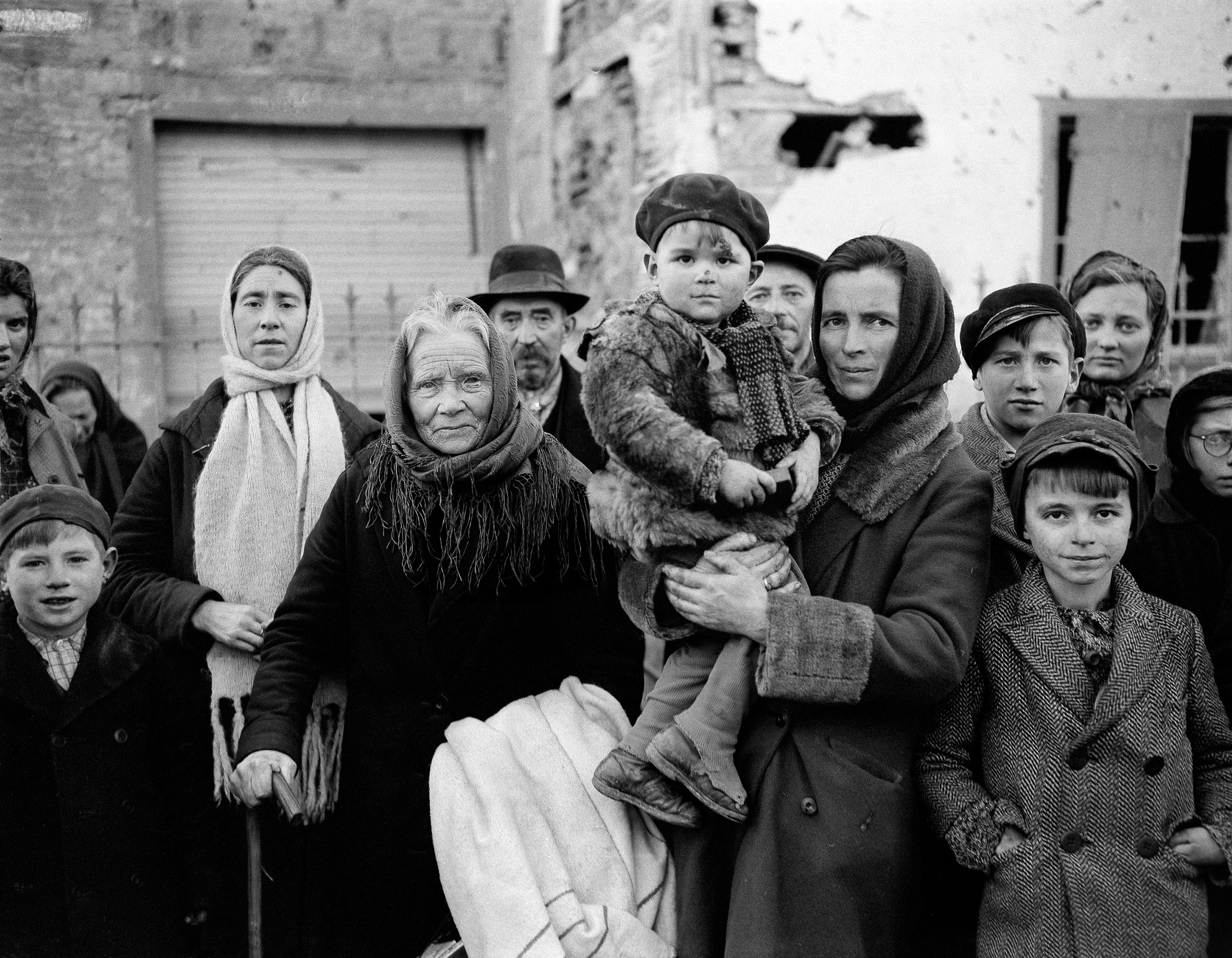
During this displacement, Catholic and Protestant congregations organized to respond. Christians joined with U.S. policymakers to convince American citizens to sponsor refugees. And while the U.S. Government created new resettlement legislation, Christian agencies and churches planned and implemented resettlement efforts, while also advocating before the government. In 1948, the United States passed the country’s first refugee and resettlement law. As a result, the government and Christian agencies partnered to help displaced Europeans seeking permanent residence in the United States after World War II. And to welcome the newcomers into community life.
Responding to Vietnamese Refugees
In 1965, the Immigration and Nationality Act fundamentally changed the American immigration system. Specifically, it removed quotes from the 1920s that had favored racial and ethnic groups over others and limited immigration from specific countries. The Act replaced them with a preference system that emphasized family reunification and skilled immigrants. In the next five years, immigration from countries torn by conflict, such as Cambodia and Vietnam, quadrupled. During this time, particularly from the 1950s until 1980, the U.S. Government’s refugee resettlement program was inconsistent, and the U.S. did not invest in refugee assistance. However, churches and faith-based organizations stepped up to fill in the gaps and help refugees get their footing.
Sometimes, this was done reluctantly. After two decades of conflict in Vietnam ended in 1975, 2 million Vietnamese people had been killed, 3 million were wounded, and 12 million had become refugees. In response, a woman named Evelyn Mangham emerged to call the Church to welcome Vietnamese refugees. With 20 years of experience as a missionary, Evelyn Mangham cold-called churches. She quoted the Bible. And she told stories. Because of her commitment to the Church and Scripture, she worked tirelessly to convince churches to sponsor refugees from Vietnam.
In the span of a year, she had convinced churches to sponsor 10,000 refugees from Vietnam, Laos, and Cambodia.
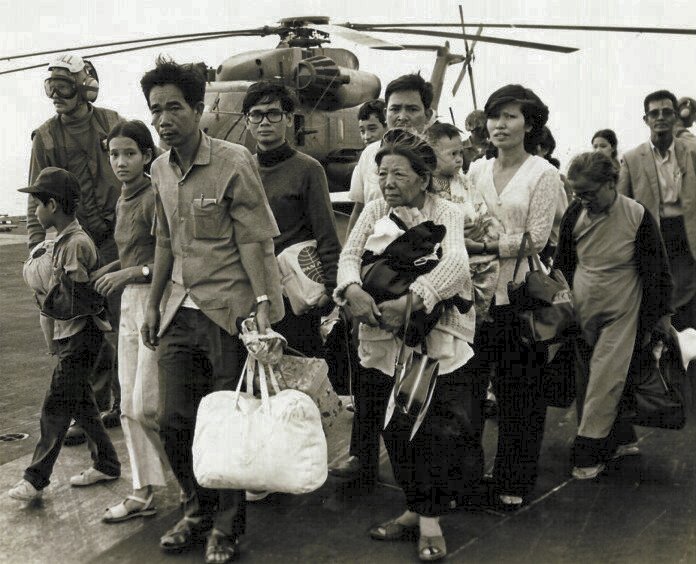
Founding World Relief
Ultimately, Evelyn Mangham went on to found World Relief’s refugee resettlement program alongside her husband, Thomas Grady Mangham, Jr.
We can thank this woman’s tenacity and conviction for World Relief’s 40-year history of refugee resettlement. And the impact continues today! All because Evelyn Mangham read Scripture and responded, believing that the Church must welcome the stranger.
“Her impact on the lives of those who are vulnerable will be felt for generations to come… I know there was a huge celebration for her in heaven as so many people whose lives she touched welcomed her to her eternal home.”
Jenny Yang, World Relief’s VP of Advocacy
Providing Safe Haven for Asylum Seekers
In the 1980s, nearly a million people fled Central American countries, crossing the U.S. border to seek asylum. Civil war and violence pushed people to leave home in El Salvador and Guatemala to seek safety. Yet a tiny fraction of those who crossed Mexico to the southwestern United States were approved for asylum.
The change came when Christians, alongside Jewish and other faith leaders, advocated on behalf of these migrants. The Sanctuary Movement began in 1980 with a goal: to provide shelters to Central American refugees fleeing civil wars. For instance, churches provided English lessons, basic humanitarian help, and legal aid through immigration attorneys. Additionally, leaders preached sermons, organized protests, and advocated to the government on behalf of the asylum seekers. And hundreds of religious communities provided sanctuary, usually inside houses of worship.
At its height, the movement grew to include more than 500 congregations.

Consequently, the Sanctuary Movement was successfully pushing the Reagan administration to pass the Immigration Reform and Control Act of 1986. This landmark piece of legislation extended temporary worker visa programs and helped 3 million people gain legal status.
Recent History
Today, there are nine agencies that work with the U.S. Government to resettle refugees. World Relief is one of them, along with five other faith-based organizations. One is Jewish, one is Catholic, and three others are Protestant. World Relief invites churches and Christians as a whole to welcome refugees and serve immigrants in the community – regardless of the religion, ethnicity, or country of origin of the newcomers.
As these five examples show, Christians have often been on the front lines of serving immigrants and refugees. Together, they have shaped history and the future of the country. Through action in faith, the Church has moved.
Today, Christians have another opportunity to act. And it’s at a pivotal time. Just like Christians throughout U.S. history, those who join World Relief are motivated by faith. And like Christians in the past, we have a calling. In response to a crisis, we can move together. Because of our faith and in light of the need, we can love our neighbors as Christ loves us.
And we can welcome the stranger.
Photo Essay: The Afghan Seamstress Sewing Beautiful Garments in Her New Community
Meet Samira
On a cold day in the middle of Illinois winter, the home of Samira* and her family has vibrant colors. Though the family only arrived in the U.S. a few months before, they have been busy. And much of what Samira has done is create. This photo essay showcases the beautiful garments that Samira makes.
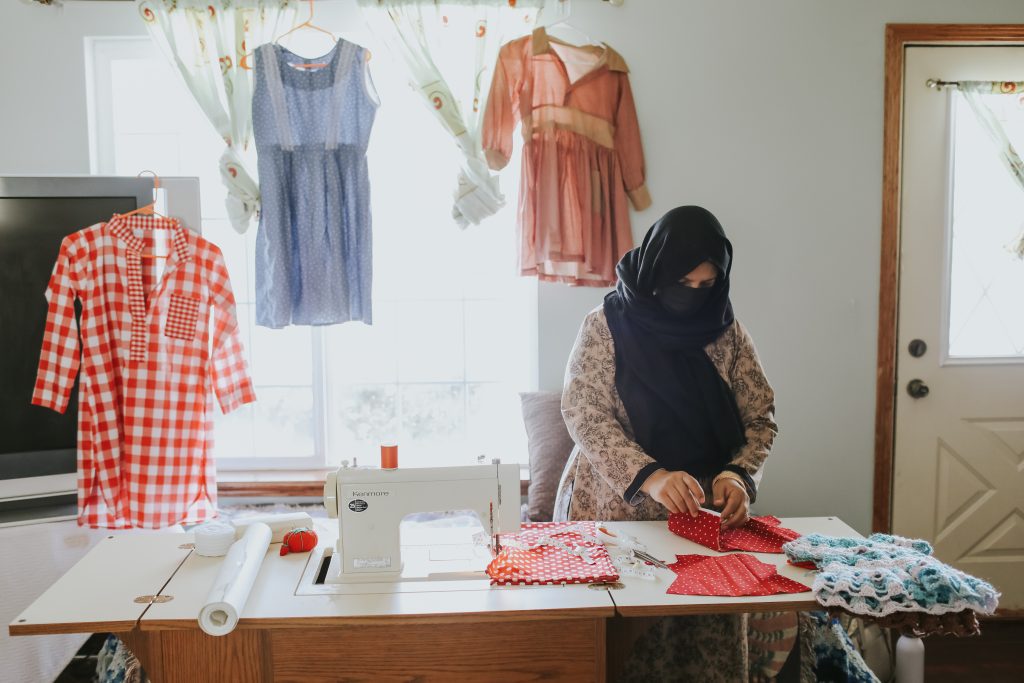
In Afghanistan
In her home community in Afghanistan, Samira* was a gifted seamstress. With her skills in sewing and crocheting, she crafted gorgeous wedding gowns, dresses, and other apparel.
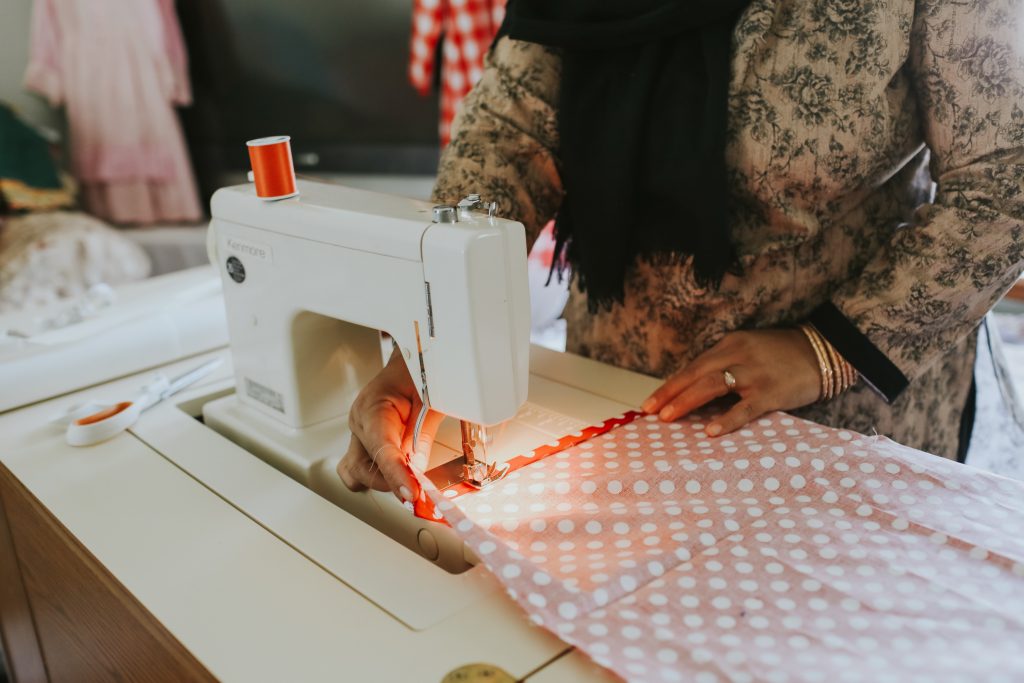
The days of making wedding dresses for friends and relatives in her hometown in Afghanistan are long gone. Today, they are documented only through a few photo prints.
On the Journey
Samira carried those photos with her when the family Afghanistan. They came with her to the U.S. military base where her family awaited resettlement. And now, in their new home in the suburbs of Chicago, Samira looks at her photos as mementos of a life left behind.
But even on their family’s journey, Samira found ways to use her talent and scarce resources to meet her family’s needs. She transformed a bedsheet into a dress for her daughter. She made yarn by hand from spare materials.
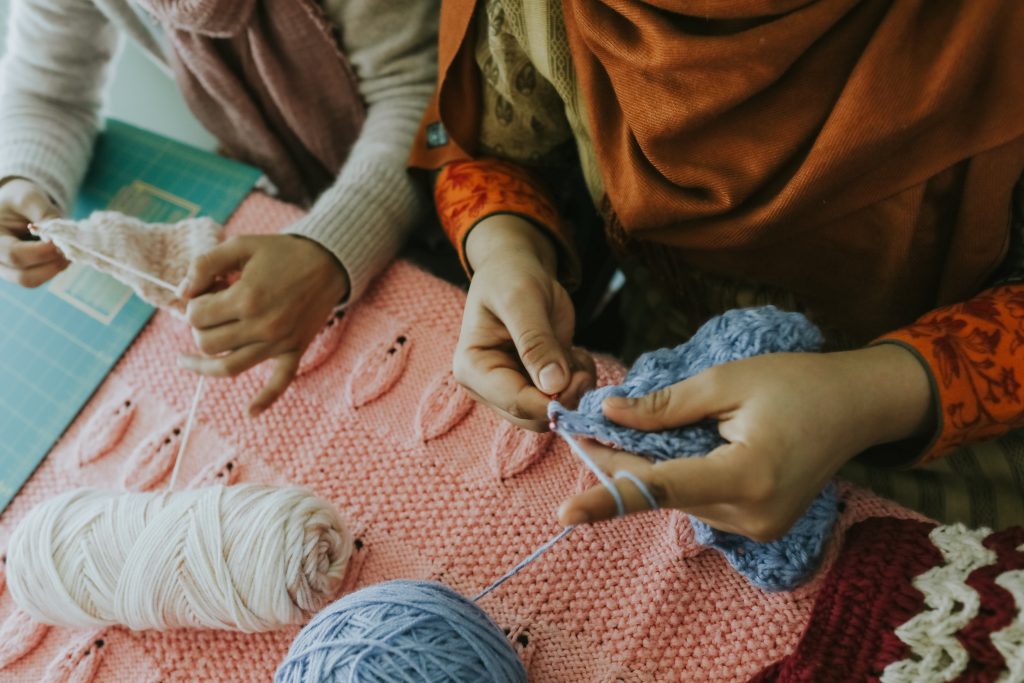
In a New Community
When World Relief Chicagoland welcomed Samira and her family to Illinois, staff learned of Samira’s skill as a seamstress. Thanks to the generosity of our supporters, she gained a sewing machine, fabric, thread, and other sewing tools. Now, she uses her skills to create a home and support her family in the United States.
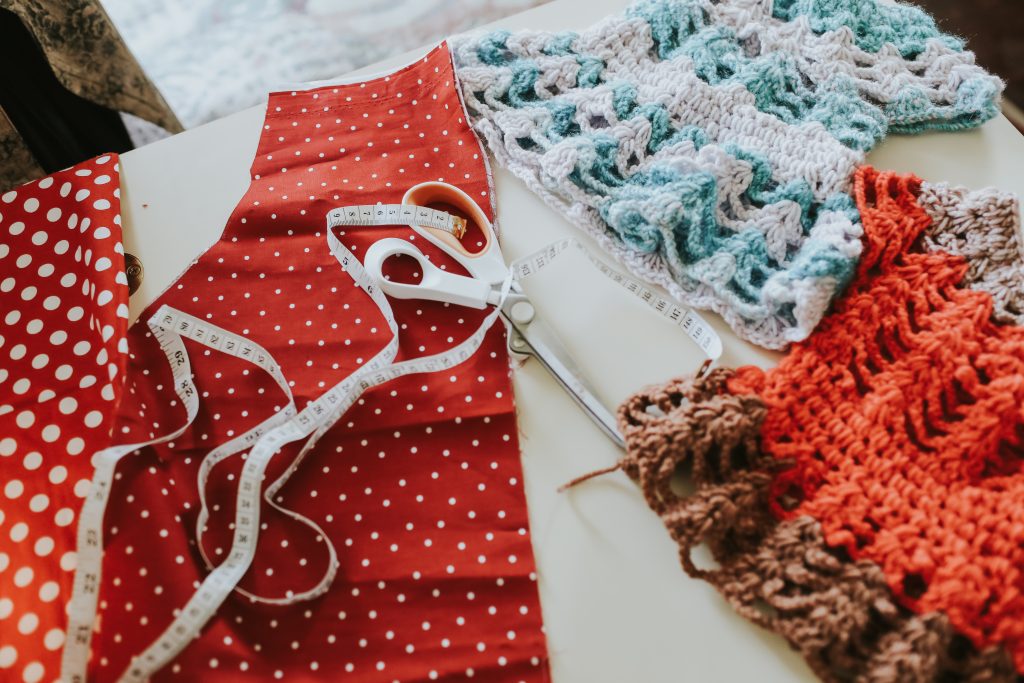
The next time World Relief Chicagoland staff saw her, Samira and her daughters were wearing brand-new dresses sewn just that week!
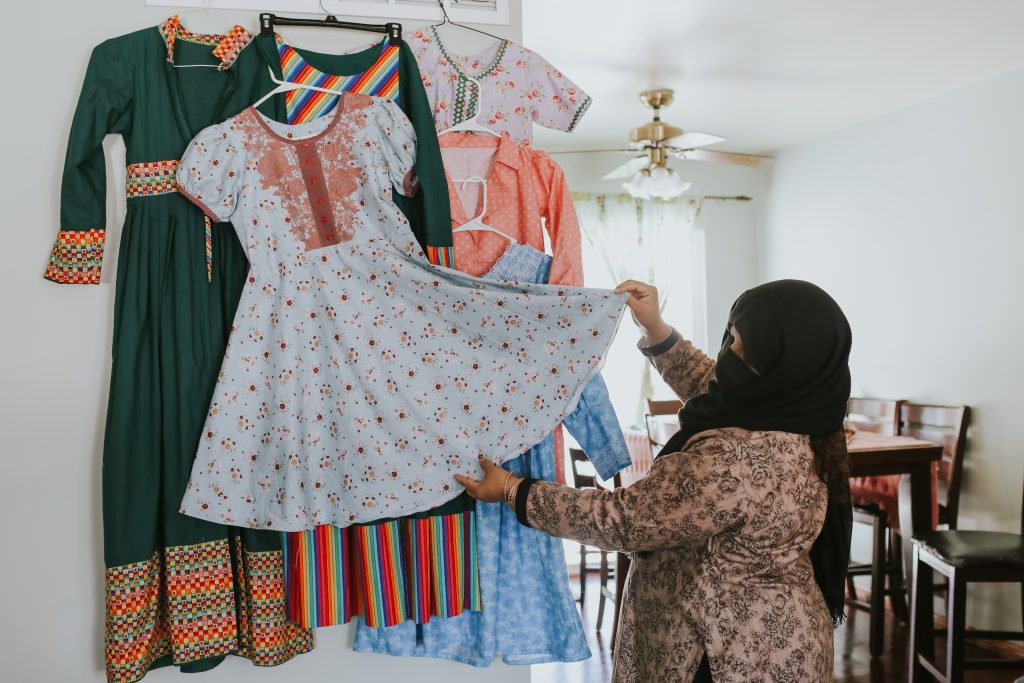
In her home, during cold Chicago winter, Samira crochets scarves, gloves, and hats. She and her daughters sew dresses. And while Samira left so much behind, now she creates beauty in her new community.
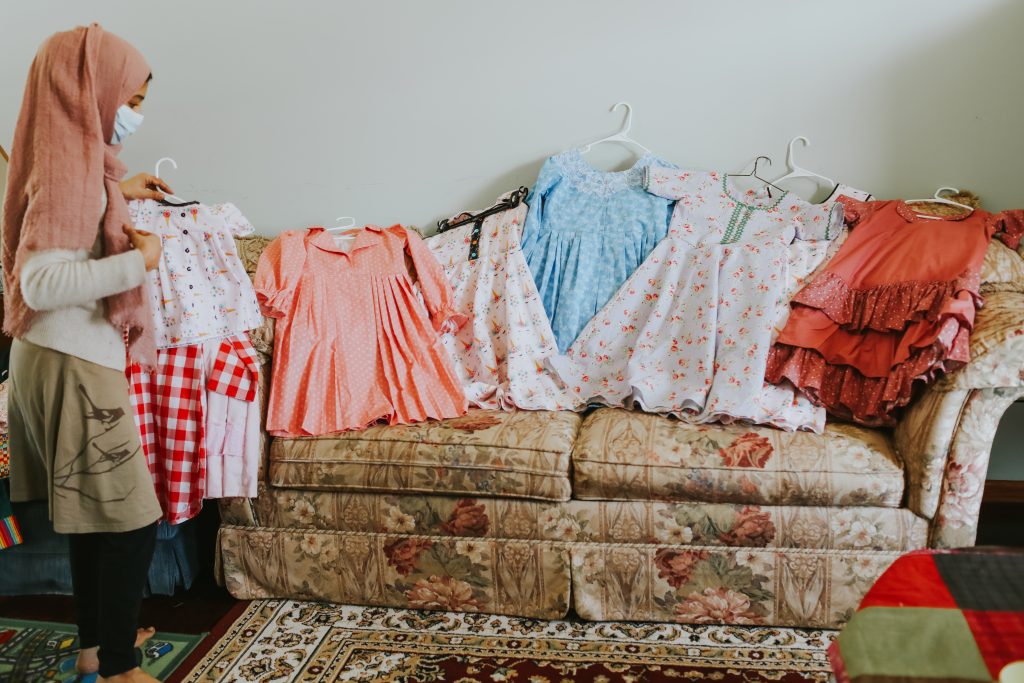
Images in this photo essay by Roxanne Engstrom of Hawa Images.
Read More
World Relief Chicagoland’s 2021 Year in Review is an annual report that features Samira’s story along with other stories of hope.
Click here to read the Year in Review.
As you read, we hope that reflecting on the year behind us inspires you. And that it reminds you of the power of creating welcoming community together.
Cozy Recipes for Winter from 5 Different Cultures
It’s February, and for those of us in Chicago, that means frigid winter temperatures. Winter means brisk walks breathing in the cold winter air and snow days spent bundled up indoors. These cold, dark months feel like the perfect excuse to get cozy.
And when I think of cozy, I think of hot drinks. I think of comforting foods that warm me up on a cold day. Chicago is a diverse and culturally rich city. Thankfully, that means a plethora of options when it comes to cold weather comfort food from dozens of cultural traditions. And at World Relief Chicagoland, we are all about celebrating that diversity. We serve families and individuals from dozens of countries with unique cultures and histories. In my opinion, one of the best parts of this is learning about and experiencing new foods and customs.
This roundup of recipes brings you delicious soups and stews from across the globe. Each is written by a cook from different background and is a unique expression their creativity and culture.
Why not test out one of the recipes below today?
Recipes for Cozying Up this Winter
Creamy Vegan Ramen Noodles
Recipe by Joanne Molinaro
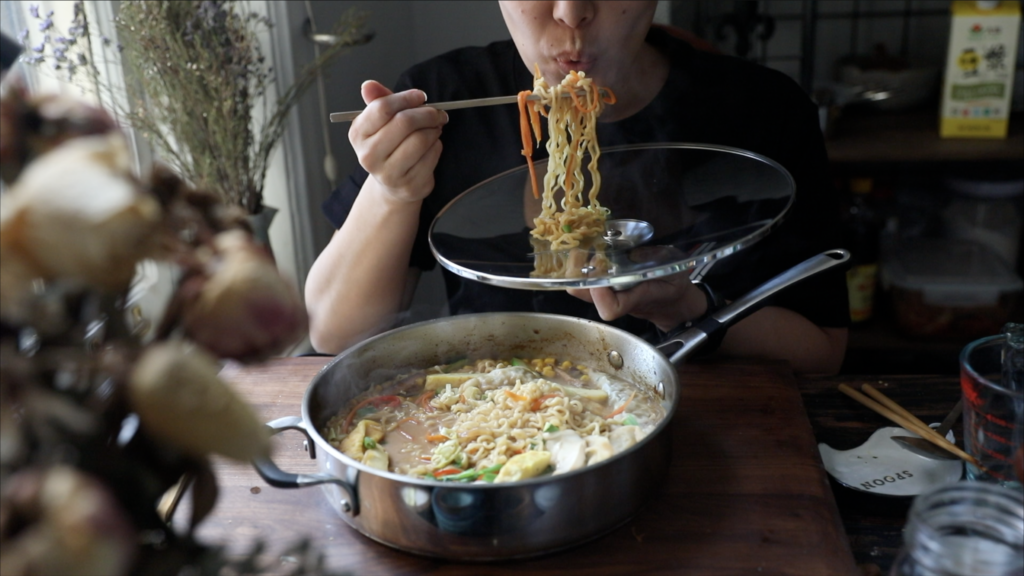
Author of The Korean Vegan cookbook, Joanne Molinaro started her food blog in 2016 when she turned to a plant-based diet. But it was after going viral on TikTok during the COVID-19 pandemic that she pivoted full-time to creating recipe videos. Today, she creates 60-second videos and blogs of vegan recipes of Korean food while sharing stories about her family – immigrants from what is now North Korea.
This ramen (or “lah-myun” in Korean) recipe puts a vegan spin on a popular trend. On TikTok, cooks make ramen rich and creamy by adding egg and mayonnaise to a bowl of ramen. In this vegan version, Korean soy milk and doenjang (fermented soybean paste) lend the same level of creaminess. With tons of vegetables, soy sauce, tofu, and noodles, just a few minutes create a spicy and satisfying noodle soup.
Seco de Chivo (Goat Stew)
Recipe by Layla Pujol
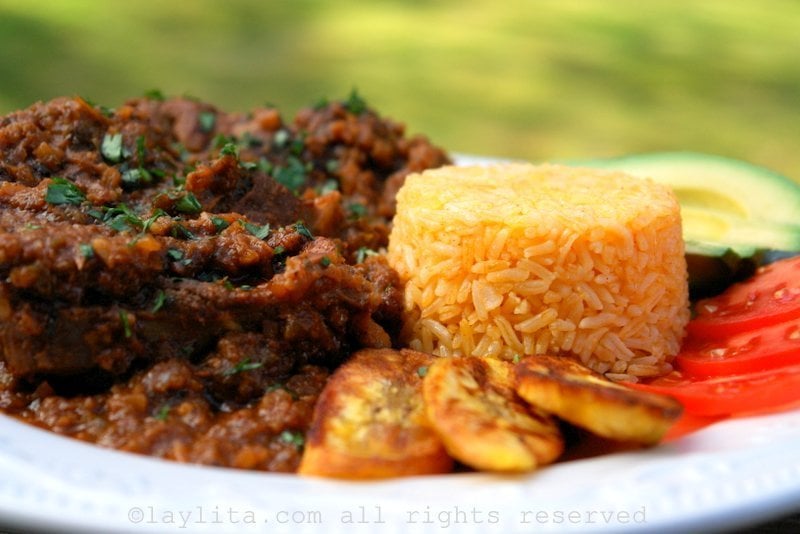
Cook Layla Pujol, who goes by Laylita, was born in Ecuador before moving to the U.S. and now living in Luxembourg. Her blog is full of recipes for the Ecuadorian dishes she grew up eating, but it also introduces readers to foods from across Latin America. Laylita draws on inspiration from family and friends cooking and eating across the world and celebrates Latin American culture as well as culinary tradition.
Seco de chivo, or goat stew, is a recipe for celebration! Laylita’s community prepared it only for fiestas when she was growing up. With tender goat meat and a sauce made with flavors like garlic, cumin, achiote, oregano, cilantro, and a fermented corn drink, this hearty goat stew can also be served with rice, fried plantains, or avocado!
Borscht
Recipe by Natasha Kravchuk

Natasha Kravchuk arrived to the U.S. with her family as a refugee at only four years old. When they left their home of Ukraine, the family knew no English at all – but they were committed to becoming part of their new community. Today, Natasha and her husband Vadim make videos and blogs of their recipes on Natasha’s Kitchen. There, she shares well-loved recipes – many of which come from family and friends – and include many from Russia and Ukraine.
Beets make borscht, a nutritious and delicious soup full of beans, potatoes, carrots, and cabbage, a striking red color. Full of vegetables and served with a dollop of sour cream on top, borscht is a classic dish in Ukraine and perfect for cold winter months. Just be careful to not stain your hands red with beets in the process!
Kadhi
Recipe by Priya Krishna

One of my favorite food writers is Priya Krishna, currently with The New York Times. She calls her cookbook Indian-ish a loving tribute to her mom’s cooking – Indian-American hybrids that are “easy to make, clever, practical, and packed with flavor.”
Her Kadhi recipe for Bon Appetit is all about being simple to make but full of complex flavor – what she describes as “a cozy blanket draped over a hot bowl of white rice.” The recipe comes in many variations across regions in India, and this version is full of spices and tinted the distinctive yellow color of turmeric.
Red Red Vegan Bean Stew
Recipe by Zoe Adjonyoh

In 2010, Zoe Adjonyoh started on a mission to “bring African foods to the masses.” Today, she is a recipe creator and ambassador for “New African Cuisine” and author of a popular cookbook called “Zoe’s Ghana Kitchen.”
She sees food as a powerful tool – a “bridge between cultures” that was also a way that she connected to her own family history in Ghana while growing up as the child of immigrants.
Recipes like this “Red Red Vegan Bean Stew” are a delicious way to learn a little bit about Ghana too! This stew made of black-eyed peas cooked in spiced tomato sauce is a meal eaten any time of day in Ghana. It’s a tasty, healthy, nourishing, and comforting food that is equally easy to make! To go the extra mile, serve with fried plantain on the side.
Cook and Eat!
These recipes bring flavors from countries across the globe as their creators blend old traditions with new techniques and their own spin. If you try any of these recipes, why not share some with a friend or neighbor? Or ask someone in your community to teach you how to cook their favorite food! If you do, post a photo on social media and be sure to tag World Relief Chicagoland. We can’t wait to see your culinary masterpiece!
Continue Reading
4 Resources From World Relief Staff That Have Shaped Their Journey: MLK Day
What Is It Like to Intern with World Relief?
Real Responsibilities, Meaningful Experience
Are you looking for an internship where you can gain practical experience? Do you have a passion for justice or a desire to learn about issues faced by refugee and immigrants?
From the start, as a World Relief Chicagoland intern, you have real responsibilities. With that comes the opportunity to engage directly with the immigrants and refugees that the organization serves. Alongside World Relief’s full-time staff, interns get to build relationships and play an active role in meaningful work. We think that makes World Relief internships pretty special.
World Relief’s interns play an important role in executing tasks and facilitating activities throughout each department. Some interns support a program area like Education or Immigration Legal Services. Others learn about community engagement and marketing or use their data and research skills.
And when the internship is over, interns move forward with valuable skills and practical knowledge about immigrant and refugee services.
To help you imagine what your experience interning with World Relief could be like, we talked to Kaitlin Liebling. Kaitlin is a senior at Wheaton College who talked with us about what she learned through her internship with the Employment Services team and why she recommends that other students apply to intern with World Relief.
Meet Kaitlin, Former Intern
Hi Kaitlin! Could you start by telling me a little about yourself?
I’m currently a student at Wheaton College and I’m a double major in International Relations and Spanish. I’m currently in my fourth year and from West Chicago, Illinois originally.
When I came into Wheaton, I was unsure about what I wanted to study. I had no idea what International Relations was, but then I took one intro class in International Relations, and I loved it. I had always read the news a lot, been interested in what was going on outside of the U.S., so I landed on International Relations very quickly.
How did you get connected to World Relief and what interested you about interning with us?
I have known about World Relief my whole life from growing up in the area, but didn’t know much aside from that the organization helps refugees. Initially, I got an email that World Relief was looking for interns for the fall, and I needed an internship for my International Relations major requirements. I read over the intern responsibilities online, and I thought, “It sounds like a really cool opportunity, I need an internship, I like the mission of World Relief, it sounds really interesting to help refugees.” I applied and got the internship!
How did you end up on the Employment Services team?
On the application, you can put your top two department choices. I believe I put Employment Services and Immigration Legal Services, and Courtney [Internship coordinator at World Relief Chicagoland] and I talked in the interview [about the requirements for each team]. I thought, “Let’s do Employment Services. It sounds interesting. I’m not quite sure what that means, but let’s try that.” Then Courtney had me interview with Dan, my supervisor on the Employment team.
How would you describe the work of Employment Services?
The job of Employment Services is to get newly arrived refugees a job within their first three months in the country. It’s super important that they get a “survival” job right away. Luckily, the department has a lot of connections with employers in the area. We help them with preparing for their interview and for the American workplace, which often has different standards for everything from hygiene to preparing a resume. And then, in the future, Employment Services helps people who have been here for six months or a year to start down a career path with the ultimate goal that they make even more money beyond their “survival” job.
What are a few things you learned in your internship?
I have a better understanding of what it means to be a refugee now than I had before. I honestly don’t know if I had met a refugee before my internship. Obviously, I’m not a refugee and I haven’t experienced that for myself, but I have now talked with dozens of people from Afghanistan, Sudan, Myanmar, and all these other countries. I have gotten to know a lot of them on driving trips to the doctor, the food pantry, to get a permit at the DMV…
I feel like I understand better now how difficult a decision it was to leave their home country, and how much they miss their old lives. While they’re grateful to be in America, they also really miss their home countries. It wasn’t necessarily their choice to come to America, it was really for safety reasons a lot of the time. I understand now how difficult it is to adapt to a country that is so different from your home country. There are so many different customs and cultural things.
I really think it increased my understanding of their situation, my empathy for refugees, and my support for them… from having the one-on-one interaction.
What were your favorite things about interning? Why should other students consider joining World Relief as an intern?
The variety of the intern work I did was really cool and engaging. I did a lot of different things during my internship. I did office work, I helped manage and compile documents, and I created new documents for Career Pathways, but I also drove people places and helped with the job club as well. Every day, I came in for my internship not knowing what the day was going to look like and what I was going to do. I liked that!
I loved working with the Employment Services team. Everyone there was so nice and so supportive. I felt like I could ask anyone any question and they would be happy to help me out. We were really a team. It’s a good group of people that you would want to work with.
Where there any ways that you came to understand your faith and role in the world as a Christian differently as a result of this internship?
It put into practice the call from Christ and the Gospels to love the foreigner and welcome the stranger. You can see that throughout the Old Testament. That God exhibits special care for the foreigner because they can often be forgotten or left behind. And they often need extra resources to help them in their new country. World Relief does this practically. I think it’s been very rewarding work. And a way for me to see my faith lived out in practical ways to help people and welcome them to my country.
And through practical means! On the Employment Services team, I did lots of resume reviews. I got resumes that were 7, 8, 9 pages long from refugees. That’s what’s normal in their countries, but a way of loving them and welcoming them to America is to say, “This needs to be one page and one page only for most jobs.” That’s a way to serve them where I could see my faith lived out through my work.
Is there anything else you would like to share?
I would encourage students who are interested in World Relief or need an internship to really consider doing it with World Relief. It’s very rewarding work. You learn a lot about other cultures. You meet a wide variety of people. And I think especially with all of the Afghan refugees coming in, more help from other interns would be appreciated. If you have a heart for refugees, I hope that you would consider an internship with World Relief.
Apply to Intern Today
Find out how you can contribute your knowledge, talent, and passion for creating welcoming communities. Apply to be a World Relief intern today!
Not looking for more than an internship? Consider one of our open positions!
4 Ways to Read, Watch, and Listen to Powerful Immigrant and Refugee Stories
At World Relief, we love to bring you inspiring and meaningful stories about the immigrants and refugees arriving in Chicagoland. Yet we are all part of an even bigger story – of migration, change, poverty, and global factors that impact all of us. To give you insight into this bigger story, we put together this list of four resources in varying formats – podcasts, a film documentary, a book and articles. Each one gives the audience the chance to see the bigger picture through the eyes of immigrants and refugees. We hope these stories move your heart and that you feel inspired to join the work needed to create a better future.
Podcasts
This American Life, “693: Abdi the American”

What is it? This podcast episode from This American Life returns to a story from years prior of Abdi, a Somali refugee living in Kenya, who won a visa lottery to come to the U.S. as a refugee. And before he can make it to the United States, the police start raiding his neighborhood and targeting refugees. This story picks up three weeks after Abdi finally became a U.S. citizen in Maine. Take some time to listen to his account from years before of winning a visa lottery and then facing incredible obstacles before making it to the United States.
NPR’s Code Switch Podcast, “What Does It Mean to Be A ‘Nation of Immigrants’?”

What is it? NPR’s Code Switch Podcast specialized in sharing stories about culture and race that are rooted in current events. Although the events that inspired this podcast occurred in 2018, this episode remains relevant because it also explores the bigger picture of how immigrants fit into the U.S. as a country – and the challenges many face after arrival. Through an interview with refugee and immigration law expert Hiroshi Motomura, this episode dives into topics like family-based immigration, the history of how immigrants have been treated, and how it feels to be an immigrant in the United States.
Beyond Soundbites Podcast, Episodes 17 and 18 “The Reason I’m Here” in the “Searching for the Personhood of Refugees” Series
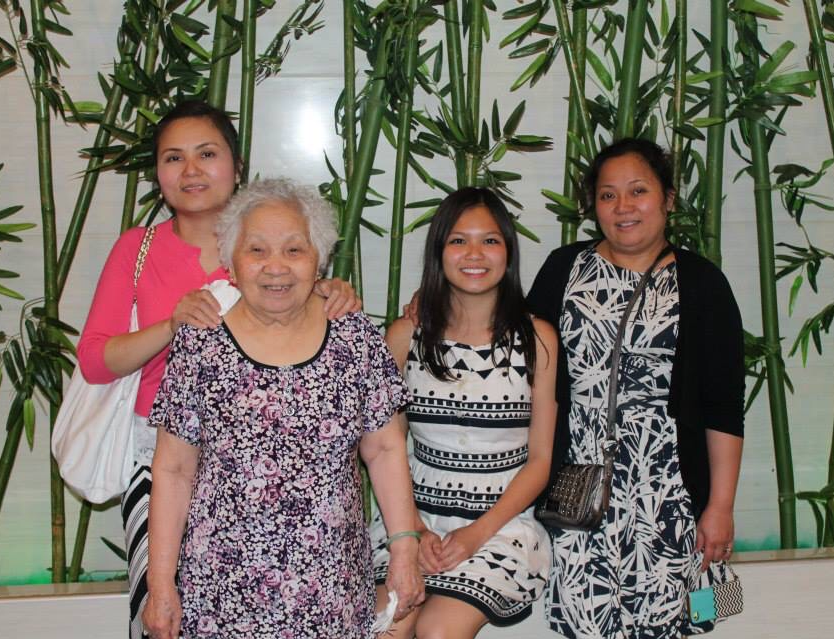
What is it? The Beyond Soundbites podcast takes a faith-informed approach to exploring the complex refugee experience. Episodes 17 and 18 explore the story of Trang Tran, who arrived to the U.S. from Vietnam as a baby thanks to the Refugee Act of 1980. Trang invites listeners to join her as she pieces her story together and seeks to understand her own family’s story. Also, many of the creators and contributors to the Beyond Soundbites podcast have long-term connections with World Relief. And they apply their own passion for welcoming immigrants and refugees to every aspect of the podcast.
Movie
Human Flow by Ai Wei Wei

What is it? Human Flow is a stunning and epic documentary film by Ai Wei Wei, an internationally renowned artist who applies his creativity to visualizing global mass displacement. Ai Wei Wei explores the tension between the enormous scale of displacement and the poignance of individual stories. And since the film was released in 2017, the global displacement crisis has only grown, which makes the film’s mission to understand the experience of displaces people and promote a belief in everyone’s unique value more relevant than ever. And through powerful visuals, interviews and stories, the film makes the global refugee crisis feel real in a very personal way.
Book
The Girl Who Smiled Beads by Clemantine Wamariya and Elizabeth Weil

What is it? This autobiography tells the story of a young woman who is a refugee and whose family fled their home when she was only six years old. Spanning years, the book traces her family’s journey through refugee camps in seven African countries until Wamariya eventually makes it to the United States as a refugee. However, the story doesn’t end there…
“It’s strange, how you go from being a person who is away from home to a person with no home at all. You are unwanted, by everyone.”
Clemantine Wamariya and Elizabeth Weil
The Girl Who Smiled Beads describes a family’s struggle to hold onto their dignity. Their fight to stay together. And the lingering trauma that lasts far past the actual violence they experienced. Even after arriving safely in the U.S., Wamariya describes wanting to challenge stereotypes and throughout the book, she pushes back. Should you see her as a poor, grateful, exotic refugee? No, she is a person of agency, feelings, and unique experience.
Article
NPR’s Goats and Soda, Stunning Photos Depict Migrants ‘As They’d Rather Be Seen’ by Malaka Gharib
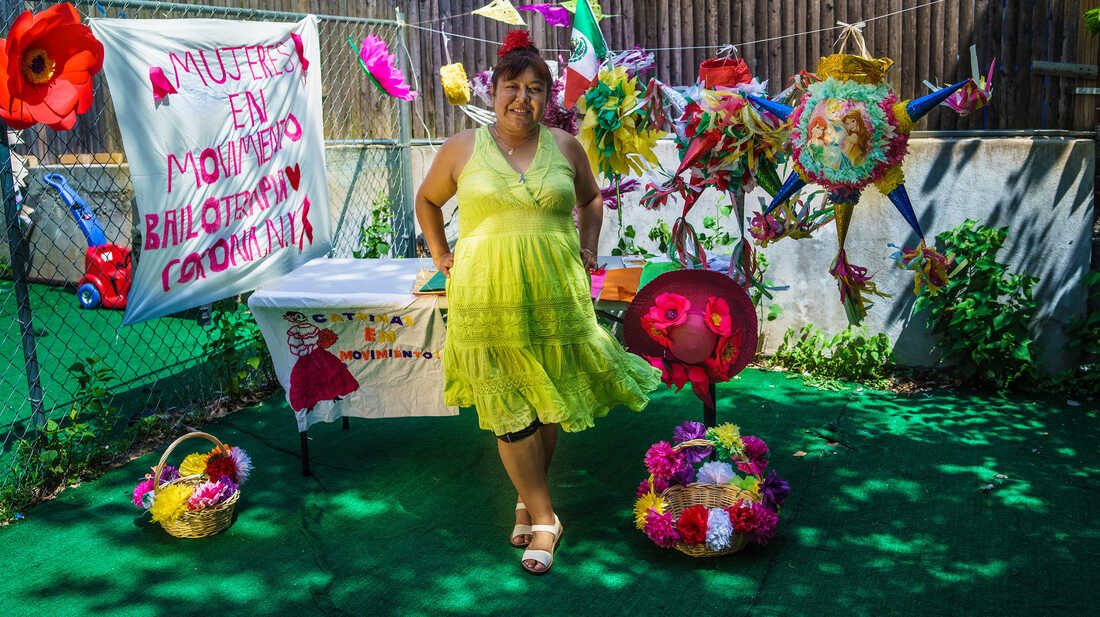
What is it? We have all seen heart-wrenching images of refugees and immigrants suffering, as oppressed and victims of violence. And in contrast, this article profiles a photo exhibit called Another Way Home. The art show provides a different narrative. It shows people how they want to be seen. And it does so by featuring 13 immigrant, migrant, and refugee photographers, artists, and storytellers and showcasing their works of art.
What will you learn next?
We hope that these resources help you connect to the stories of refugees and immigrants: people who come from different backgrounds, places, and stories but have dreams and goals for their lives. Ultimately, this is a launchpad. There are countless stories out there of people who overcame obstacles, faced incredible challenges, and are rebuilding their lives after loss and displacement. Because of that, we hope you will think of this as a starting place. Whose story will you hear next?
Continue reading:
Abdul and Yao: Story of Impact
How to “Drive” Change by Donating Your Car
I still have my first car. It’s a blue Honda with hundreds of thousands of mileage. That car has taken me from Georgia to California and back. It saw me through a spontaneous road trip from Tennessee to Connecticut when I was in college. It has traversed the red rock hills of Sedona, Arizona, and the city streets of Chicago, Illinois. This car has blasted me with air conditioning on the hottest summer days and kept me safe and dry when storms poured rain on my way to work. All in all, my faithful little car has been my transportation across 26 states. Without fail, it has gotten me where I needed to go.
That blue Honda is so reliable that I rarely thought twice about making plans, driving to work, or volunteering to carpool with coworkers.
And then it unexpectedly landed in the auto repair shop.
The repair took three weeks. That meant three weeks without a vehicle. And those three weeks showed me how much I relied on my car. So many of my plans were contingent on being able to drive any time. Having a reliable car meant always having transportation. The flexibility to make plans. Never wondering how I would get to work each day. I could drive to the doctor and get there on time. Family never wondered if I could pick them up at the airport.
Without my car, I was limited.
However, I also learned how many advantages I have. Advantages that many people don’t have. These advantages meant that losing my car for three weeks was an annoyance, not a disaster. Because of where I live, I can walk, ride the bus, or take the train nearly everywhere I want to go. I work from home often, so I didn’t have to worry about losing my income. And because I have friends with cars, I was even able to borrow a vehicle for the day when I needed it.
What if that hadn’t been the case?
What if no car meant three weeks of not making it to work? That could mean losing a job that I worked hard to get and need for income. All of a sudden, my ability to pay rent would be in jeopardy. Going to the doctor, shopping for groceries… all of these things would become much more difficult, time-consuming, and inconvenient. Transportation barriers regularly impact people’s health care access. They increase isolation. And lack of transportation is a major obstacle to employment for millions of Americans.
The Barrier of Transportation
At World Relief Chicagoland, we frequently talk about the barriers that immigrants and refugees face when they arrive in the United States. Those barriers come in all shapes and sizes – they can be anything that keeps families from accomplishing their goals.
Oftentimes, for those whose new homes are in the suburbs, near World Relief’s offices in Aurora and DuPage County, one of the biggest barriers is transportation.
Consider this:
- Suburban neighborhoods often don’t have access to buses and trains, or routes don’t cover every area.
- Carpooling is a good option, but only if everyone’s schedule matches up. This doesn’t work very well if you work an unusual shift or have commitments like picking your child up from daycare by a certain time.
- Uber and Lyft can work in a pinch, but the cost per ride is high and adds up quickly.
- Because of the current lack of affordable housing, people will take apartments wherever they can – but this might put them out of walking distance from their community and limit their access to carpools.
Two Stories
Right now, World Relief knows a family of six who live with a relative in Aurora. This relative has a car, so they are hoping to find affordable housing near her so that she can take the adults to work and help them run errands. This is their best option because there aren’t any carpool or public transport options nearby, although the father of the family already has his driver’s license. Getting a car would mean the family has more flexibility in housing and the ability to drive to work, pick up groceries, and make it to doctor’s appointments – all on their own, without relying on their relative.
Another family we know is a single mother and her son. This mom is on her own, but determined to work hard to support her son. The first step toward getting a job is access to childcare—and thankfully, World Relief staff connected her with an amazing and affordable place where her son will be safe and cared for throughout the day. However, the daycare is only open from 6 a.m. to 6 p.m. – and the only carpool in her area is on a schedule that won’t let her pick up her son on time. Having access to a car will open amazing opportunities for this mom to drive to her job, work to support her son, and pick him up at the end of the day.
For these families, access to a car unlocks an incredible future. Lack of access limits that potential.
The Unmatched Impact of Donating Your Car
World Relief Chicagoland can count the families who need a car right now. Receiving a car right now would change their lives completely. And each car would have a rippling impact far beyond one individual or family.
If we had six cars right now, we would be able to give them out within two to four weeks. That would provide transportation to as many as twenty-four people who have jobs at up to six different companies.
– World Relief Chicagoland Employment Team staff member
Think of it like this – each car not only serves a person’s entire family, but it begins a new carpool opportunity that provides regular transportation for up to five or six people in the community who work at the same company. One car makes it possible for families to access other community resources, participate in events, visit relatives in other towns, and run errands in a more efficient manner.
How do we connect these families to vehicles?
How did you get your first car? What about your first job?
My blue Honda made it possible for me to drive to internships in college, take my roommate to medical appointments after an injury, move across the country for a new job post-college, and get to work every day once there. It’s not fancy. But it has always gotten me where I needed to go. My family gave me this car as a young adult, and it was a vital part of launching me into my adult life and career as I was just starting out.
Immigrant and refugee families who are rebuilding their lives in the U.S. face all kinds of barriers. But transportation should not be one of them.
Waiting to buy a car will prevent them from accessing the job opportunities and community resources that will create financial stability in the first place. And yet it would be impossible for most families to pay thousands of dollars to buy a car now.
You can jump-start their process to thriving by donating your car to World Relief Chicagoland. When you do, you will remove the barrier of transportation for as many as five or six immigrant or refugee families. And by removing the barrier of transportation, you create career opportunities and a positive economic impact that touches everyone in the community.
Will you be swapping your car for a newer model this season? Do you need a bigger vehicle to accommodate your family’s needs? If so, consider donating your car to World Relief Chicagoland.
The gift of transportation is a tangible way to change lives.
Continue reading:
Downloadable Gift Card: Give in Honor of Someone You Love this Holiday Season
What kind of present do you get for the friend or family member who has it all? This year, we have an answer! With this downloadable gift card, give in honor of your loved one to World Relief Chicagoland. You will gain the knowledge that your gift is making a life-changing difference for an immigrant or refugee. And by giving in honor of your friend or family member, you will both know that, together, you are helping to change lives for the long-term.
How to Give in Honor of Your Loved One
1. Give Online
To give in honor of your friend or family member, first, choose your amount and donate online. Whatever the amount, you will know that your gift is making a lasting impact on an immigrant or refugee in a vulnerable situation this holiday season!
2. Download A Gift Card
We created a special gift card for you to download and send to your loved ones – or leave under the tree on Christmas morning! With this card, you can show them the impact they will be making through the gift you gave in their honor. Not only is this a meaningful way to show your loved ones that you are thinking of them, but they will be inspired by how together, we are helping immigrant and refugee families to thrive!
Download Your Gift Card Now
3. Print & Fold Your Gift Card
How to fold your card:
First, fold the paper in half.
Next, fold in half horizontally.
Finally, Write your personal message inside and give to your loved one!
*If you find that upon printing, the gift card is off-center, please check your print settings and adjust to “default” mode.
Thank you for giving to help immigrants and refugees rebuild their lives and seize a brighter future!
How the Affordable Housing Crisis Is Impacting Refugee Families
We all want to build communities where refugees and immigrants are welcome. But how can we do that if they don’t even have a place to call home? The lack of affordable housing has created a challenge – but it’s one we can work together to tackle.
The U.S. is in the middle of an affordable housing crisis right now. Perhaps you’ve even experienced this yourself. If so, you’re not alone! For millions of families, the dream of homeownership feels hopelessly out of reach. College graduates beginning their careers face high rent prices that force them to live with four, maybe five roommates.
Across the country, more and more Americans are spending the majority of their income on rent. They are struggling to even find affordable housing. And houses are selling far out of a middle-class household’s price range.
Sadly, this lack of affordable housing is preventing newcomers, including low-income immigrants and refugees, from achieving a stable sense of home here in the United States.
The Housing Crisis’ Impact on Refugees and Immigrants
When Daniel arrived as a refugee in the United States, sleeping with a roof over his head every night was a new experience. Finally, after living in refugee settlements and sleeping under plastic tarps for years, he now had an apartment of his own.
Like Daniel, many refugees come to the United States having not lived in a home of their own for years – or at all. They may come from U.S. military bases (in the case of Afghan evacuees), a refugee camp, or a cramped space shared with friends and family. Others were displaced more recently but lost their homes in terrifying circumstances as they fled violence or natural disasters.
Establishing a home in the United States is an important first step toward recovery after the loss of so much. Refugees have lost their homes, their livelihoods, and often their family. They have to rebuild their lives in the U.S. – and feeling at home in a new house or apartment paves the way for their future success. From getting a new job to enrolling in school and exercising hospitality for new friends and family…thriving begins with home.
But not having affordable housing can jeopardize that.
The Housing Situation in Chicagoland
In Chicago and the nearby suburbs, families face several big challenges when seeking to establish a home.
- There is a decreasing number of affordable housing units available to low-income families.
- Families are paying more than half of their income on rent and utilities each month (30% is considered affordable).
- Combined, these factors make it harder for families to pay for other essentials, including healthy food and medical care.
- As a result, families are at higher risk of eviction and homelessness – which is devastating for families.
Sadly, the COVID eviction moratorium, which ensured that renters did not lose their housing, put financial pressure on landlords. Their loss of income and subsequent debt have motivated them to sell properties to developers. New investors “flip” properties, renovating to increase the rental value, making the same apartment unaffordable to low-income renters.
Unfortunately, property sales have also led to a loss of relationships between landlords and organizations like World Relief. These relationships of trust are crucial. Refugees who are new to the U.S. often do not yet have jobs, credit scores, or even social security numbers. Because of that, many landlords feel that renting a refugee family is a big risk.
World Relief can facilitate relationships and vouch for refugee families, but when landlords sell to new developers, those relationships disappear.
Refugees need available, affordable housing that is fully furnished with basic household items. This is essential for helping new arrivals understand their rights and responsibilities as tenants while building financial literacy and stability. And you can help make that possible.
Together, We Can Respond
At World Relief, we have found that paying rent is an important part of the adjustment process for refugee families. In fact, it helps refugee families build credit, learn U.S. financial systems, and understand tenant rights and responsibilities. It also provides a relationship to a landlord and creates the experience of true ownership of their living environment.
But paying rent can become a heavy burden if it costs most of the income from minimum wage jobs.
You can help by covering the cost of an apartment deposit and the first month’s rent. This buys time for a recently-arrived refugee family to settle in. For them to find and start a new job. And for them to start finding their way through a new culture.
But we still need long-term solutions.
World Relief is calling upon our partners and supporters to join in addressing the housing crisis throughout Chicagoland. Together, we can find affordable apartments with landlords who will rent to refugees, we can provide rent assistance to subsidize the cost of housing, and all of our neighbors can join together to advocate for new affordable housing development and the preservation of existing affordable units.
Three approaches to the affordable housing issue:
1. Subsidizing the cost of rent for refugee families.
Through rental assistance, we discount the cost of an apartment for a refugee family. This makes an otherwise unaffordable unit affordable. Give now!
2. Creating community connections.
Did you know that one of the best ways you can help is by connecting World Relief to people you know in real estate and the housing sector? We need landlords, property managers, and organizations to work together. That’s how we develop new permanent housing options that are affordable!
Do you have connections in these priority areas?
- Aurora
- Bloomingdale
- Carol Stream
- Evanston
- Glen Ellyn
- Glendale Heights
- Lombard
- Montgomery
- Morton Grove
- Oswego
- Rogers Park
- Skokie
- Villa Park
- West Chicago
- West Ridge
- Wheaton
3. Advocating locally, state-wide, and nationally.
Lastly, you can impact your neighborhood and beyond! Join advocacy work to create affordable housing, provide rental assistance vouchers, and save homes. When we advocate to develop and save affordable housing units, we take a step toward long-term solutions to this national problem.
Creating Home by Leading the Change
It’s through community collaboration and coordination that we can brainstorm solutions and create innovative solutions! If you have a permanent housing connection, please email chicagolandhousing@wr.org. As a result, you will help connect refugees and immigrants to safe, affordable housing. And that will change lives forever.
Together, we can ensure that every refugee has a place to call home.
María’s Story: Letter from a New U.S. Citizen
One of the most unique aspects of World Relief Chicagoland’s work serving immigrants and refugees is the diversity of people we get to meet. Each year, World Relief Chicagoland staff serve people who came to the United States from one of more than 100 different countries of origin. Together, they speak dozens of different languages.
Each brings a unique perspective, skills, and dreams for their life. For some, the dream is becoming a U.S. citizen.

Overcoming Barriers to Achieve Big Goals
However, these immigration neighbors also face unique barriers. Financial, cultural, language, and legal barriers keep them from experiencing legal justice. From reuniting with their families. From achieving their goals. Or from becoming U.S. citizens.
Because World Relief has been a trusted presence in Chicagoland for so long, it’s very common for those we serve to bring their friends and family back to World Relief offices when they need support.
Community members know that World Relief is a safe place where trusted staff and volunteers will help them reach their goals.
The Immigration Legal Services program staff are among these trusted staff. The immigration process can be confusing. Understanding the law and legal processes can be overwhelming. And navigating the legal system as an immigrant or refugee can be expensive and stressful. As experts in immigration law as well as the challenges faced by newcomers to the United States and the experiences of immigrants and refugees, World Relief’s Immigration Legal Services team builds relationships with people amid these stressful circumstances and becomes a vital source of information, counsel, and legal representation. They are problem solvers with people who have complex legal needs. They become trusted allies.
Meet María
María’s story shows how World Relief staff build relationships when providing legal representation. Like many others, María came to World Relief through a referral by a friend. She felt like she had tried everything, and yet was getting nowhere. She was exhausted by the complex and costly legal system. Then her friend recommended she visit World Relief.
Even though I did my citizenship process in the middle of the pandemic, this amazing team of lawyers did everything for me by Zoom – no contact – helping and guiding me through every step.
María, an immigration legal services client
Not only did María receive legal help with her immigration process once, and then twice, but she ended up referring other family members too! After completing her naturalization process to become a U.S. Citizen, María wrote this letter to express her thanks.
Read the Letter from a New U.S. Citizen
Hello! Greetings. My name is María. I was born in Venezuela. Because of the complicated and delicate social and political situation in my country, I decided to come to this country [the United States] nine years ago. I met my husband in 2015. When we decided to get married, we needed guidance. After calling various immigration lawyers, it was too much information [for us] to process. We felt at a loss.
A friend of mine recommended we call World Relief.
We made an appointment. We met with one of their dear lawyers, Emily, and she guided us through the whole process. Everything went quite fast, [with] never an obstacle or mistake. It was a flawless process.
This was the reason we decided, when it was time, to also apply for my citizenship with World Relief.
Even though I did my citizenship process in the middle of the pandemic, this amazing team of lawyers did everything for me by Zoom – no contact – always helping and guiding me through every step.
Again, no mistakes. They were always so careful and checked every document that we filled out, making sure that no errors were made. It was also quite faster than expected.
I received my interview date in just eight months although it was supposed to take a year or more. [World Relief] helped me check the process. I’m not very good with computers and technology, but they were always there to help, always answered all my questions by phone or email. They also guided me through all the possible scenarios for the citizenship interview. It all ran smoothly, I brought everything they told me and followed their instructions.
I’m a very happy and proud citizen now, and I am sure I would not have been able to do this without World Relief. I am very thankful for all their guidance and help.
I pray you can continue helping others as you helped me. Thank you so much.
Sincerely,
María
Helping Our Immigrant Neighbors Thrive
World Relief Chicagoland walks with people like María to serve immigrant community members on the path to stable immigration status, giving them the security and peace-of-mind they need to flourish in the U.S.
Do you or someone you know need immigration legal services? Are you interested in providing more people like María with trusted legal guides to navigate their immigration process? You can help new Americans reunite with their family, become citizens, gain work authorization, and achieve protection from violence.
Learn more about World Relief Chicagoland’s Immigration Legal Services program.
Read more like this:
5 Impacts of Resettling Refugees
What happens when countries increase refugee resettlement?
The current U.S. presidential administration recently announced that the refugee ceiling for the 2022 federal fiscal year (which began on October 1, 2021, and will continue through September 30, 2022) will be 125,000. Reaching this number will be difficult. Policy changes from the former presidential administration and the ongoing pandemic are complex challenges. However, we can still expect that the U.S. will be accepting many more refugees in the next 12 months… and welcoming an increasing number of refugees may make Americans wonder: how does refugee resettlement impact the communities that receive new arrivals?
At World Relief, we believe that our Christian faith calls us to welcome and love our immigrant and refugee neighbors – regardless of any benefits that they might bring to us. However, we know that the increase of refugees might bring up questions or concerns, so here’s what happens when a country like the United States resettles more refugees.
1. Entrepreneurship grows as refugees and immigrants found new businesses
What is the quality that so many MBAs say makes a good entrepreneur? So often, the quality is the ability to tolerate risk! Starting a new business is risky and can be very scary – especially if you are taking out a loan, spending your life savings, or starting a new partnership! With that in mind, it’s not surprising that refugees are incredibly entrepreneurial and have the highest entrepreneurship rates along both the U.S.-born and foreign-born populations! Refugees are forced to exercise adaptability, innovation, and resilience often – think about the risk of leaving your home to start a life in a new country.
Refugees are so entrepreneurial that in 2015, 181,000 refugee entrepreneurs generated $4.6 billion in business income, providing all kinds of tangible benefits to Americans! New businesses are also responsible for a big chunk of new job creation, so by becoming entrepreneurs, refugees benefit the job sector in amazing ways that impact everyone for the better!
2. Businesses gain employees to fill in labor gaps
Did you know that the foreign-born population (immigrants and refugees) works at a higher rate than the native-born population (people who were born in the U.S. or are native U.S. citizens)? It’s true! In fact, the refugee population coming to the U.S. tends to be of working age (25-64 years old) and has a higher employment rate! The data shows that refugees who come to the U.S. get to work – and rather than taking jobs from native-born workers, they fill important positions in sectors that have a high need for labor!
3. Receiving communities gain new perspectives as refugees bring skills and insights
Don’t you love meeting someone who brings a whole different perspective and list of skills and experiences to the conversation? Refugees often speak multiple languages, have professional qualifications and skills, and know life in more than one culture. That makes them a huge asset to the workplaces they join and important contributors to community life! Refugee resettlement can bring new ideas, customs, cuisine, art, and poetry.
4. Cities come back to life
Refugees have the power to bring dying cities back to life! Past success stories show how refugee resettlement in a city can bring new vibrancy, economic life, and culture to cities experiencing economic slowdowns and declining populations. In Oklahoma City, Oklahoma, 7,000 Vietnamese families changed an entire neighborhood for the better. In Utica, New York, refugee families are 25% of the population. There, the county’s executive officer says that they have “renovated and revitalized whole neighborhoods.” In Cleveland, Ohio, a 2012 study showed that refugees from Bhutan, Ukraine, Burma, and Somalia created new jobs and boosted the Cleveland economy by $48 million. Over just one year, refugee-owned businesses directly brought $7.6 million in economic activity to Cleveland.
“[T]he refugees have renovated and revitalized whole neighborhoods.”
Anthony Picente, Jr., Oneida County’s Executive Officer
And this can be so much more than a short-term solution for these cities! Not only do refugee arrivals boost the population and bring new development, but the impact continues well into the future! Refugees are magnets. Their thriving communities attract friends and family who join in transforming the neighborhood for good! These new arrivals buy homes, start businesses, raise children, and get involved in the neighborhood. And by doing that, they create a need for jobs, bring new vibrancy, and boost the economy.
5. Economies flourish
To make a long story short – refugees help their new economies to flourish! Over and over again, there have been reports showing that refugees are positive contributors to the U.S. economy. Though there are educational and resettlement costs to welcoming new refugee arrivals, they are far surpassed by the benefits!
A report in 2017 found that refugees contributed $63 billion more than they cost between 2005 and 2014. Specifically, refugees brought $41 billion in net fiscal benefits to the federal government and $22 billion to state and local governments. That is after you take out the costs of $35.9 billion that were largely due to education! And second-generation Americans – including the children of refugees—go on to have higher incomes, educations, and rates of homeownership than their parents. Refugee resettlement reaps rewards for future generations!
Refugee Resettlement: A Unique Calling and Opportunity
The global crisis of displaced people is worse than ever. The good news is that the U.S. has a unique opportunity to respond by accepting more refugee arrivals this year.
World Relief provides the services that refugees need. But you have the opportunity to help refugees rebuild their lives. You can make a life-long impact when you act out of love and compassion to love your refugee neighbor.
We don’t welcome refugees because of the benefits they bring to us. Our faith calls us to “welcome the stranger.”
For us, the word refugee is no longer an abstract descriptor, or merely a legal designation or a statistic: he or she is our neighbor, colleague, friend, or even family.
iSSAM sMEIR, MATT SOERENS, AND STEPHAN BAUMAN
SEEKING REFUGE: On the Shores of the Global Refugee Crisis
And yet, the evidence shows that the communities that do welcome refugees are often richly blessed in return. In other words, refugee resettlement is a win-win!
Join World Relief in welcoming our immigrant and refugee neighbors this year.









